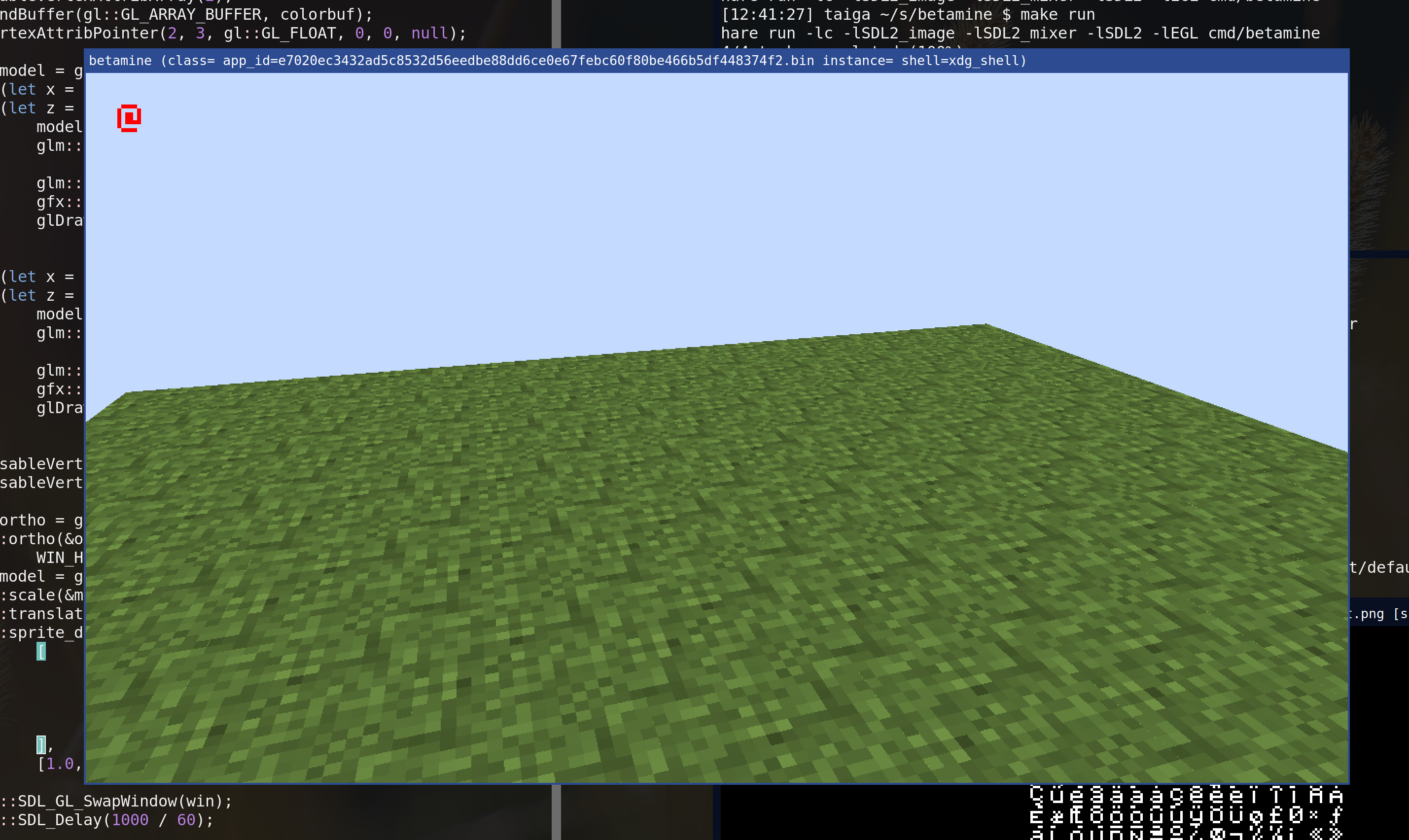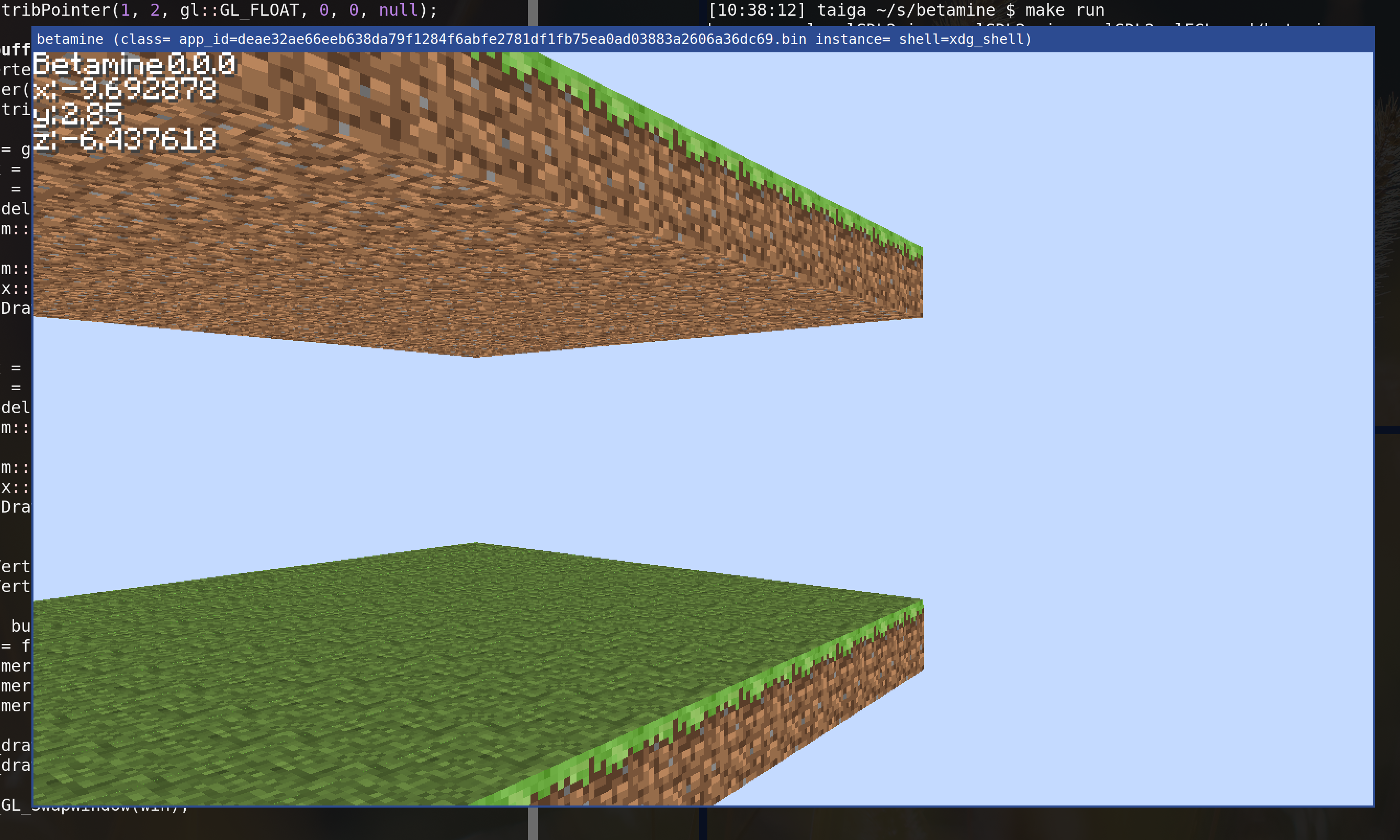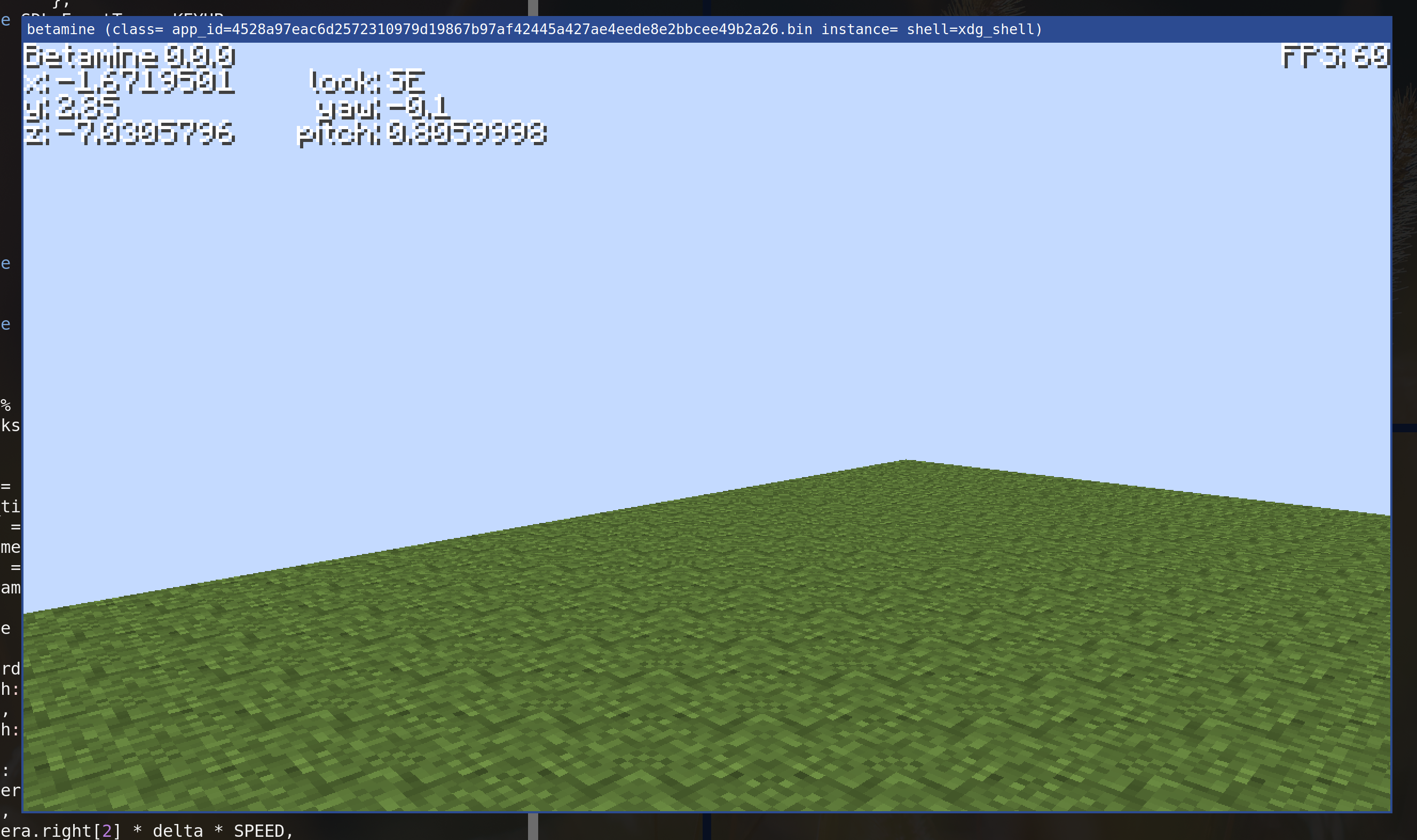Behold: it spins
-
Haelwenn /элвэн/ :triskell:replied to Drew DeVault last edited by@drewdevault Well at least it's still a pure block, unlike stairs/ladders/tall-grass/torches/fences/…
-
Drew DeVaultreplied to Haelwenn /элвэн/ :triskell: last edited by
@lanodan ladders and tall grass are even easier than blocks as a matter of fact
But the others are annoying for sure
-
Haelwenn /элвэн/ :triskell:replied to Drew DeVault last edited by@drewdevault Ah maybe on old versions for ladders where it's just a single texture against a block but I think they added some depth few versions latter.
-
Drew DeVaultreplied to Haelwenn /элвэн/ :triskell: last edited by
@lanodan ah, I see.
-
Behold: you can look
-
Behold: a sprite
Code is a bit messy since I'm remembering how to write OpenGL code in real time as I work on it

-
@drewdevault Looking good! I keep meaning to try Hare out... how fares development?
-
@drewdevault
Are you recreating Minecraft or just playing around? -
@erilun06 not sure
-
@omniscient quite well!
-
Behold: some text

-
The obvious next step is to read chunks from disk and generate geometry for them... which is going to be a bit annoying so I might put it off for a bit.
-
@drewdevault are you using Hare for this? Linux?
-
@photex yes and yes
-
Added some stuff to the debug overlay to procrastinate generating terrain geometry
(FPS hangs out around 1700 on this machine when vsync is disabled, for the curious)

-
@drewdevault Generating the terrain is so fun though! It's the first point where you get to start making creative decisions, rather than technical decisions.
-
Drew DeVaultreplied to spxtr last edited by [email protected]
@spxtr *not* terrain generation -- terrain *geometry* generation. Which is to say given a pre-generated chunk as input, convert the block array into verticies and such for rendering
-
@drewdevault Ahh, right. Well at least it's all cubes, mostly.
-
@spxtr not so! If you just render a bunch of cubes you will quickly run into a number of problems. First of all, it will look bad because floating point errors will cause minute gaps to appear between the cubes. Second, you would have to carefully sort everything back-to-front for rendering. Finally, you would have a *ton* of geometry underground which is populated but not visible, which would be a huge performance sink. You need to only generate geometry for blocks adjacent to [...]
-
@spxtr transparent blocks like air or water, and ideally only the adjacent faces, not the entire block. You also need to generate separate terrain meshes for those transparent blocks, to render them in a second pass.
